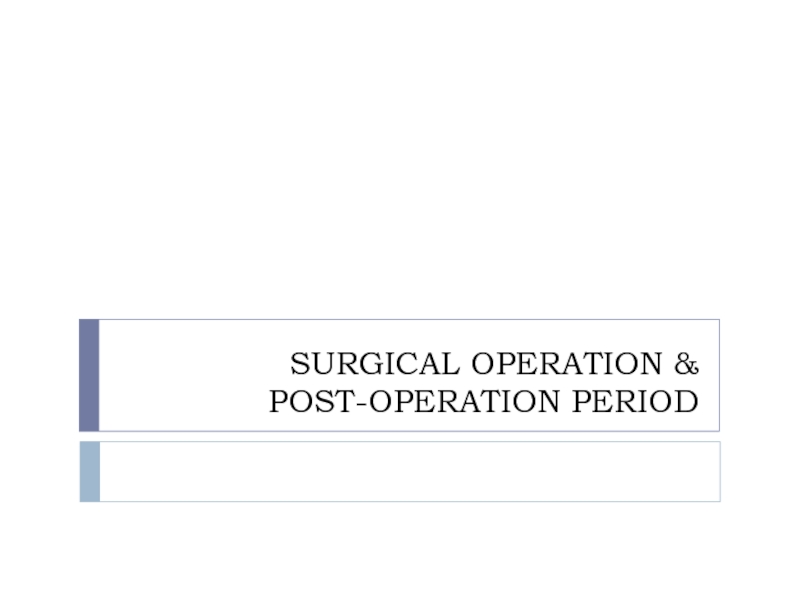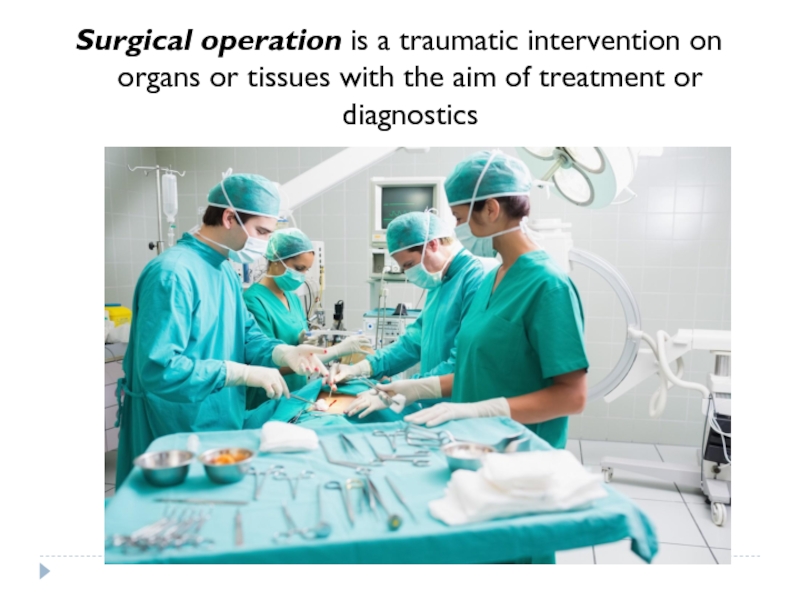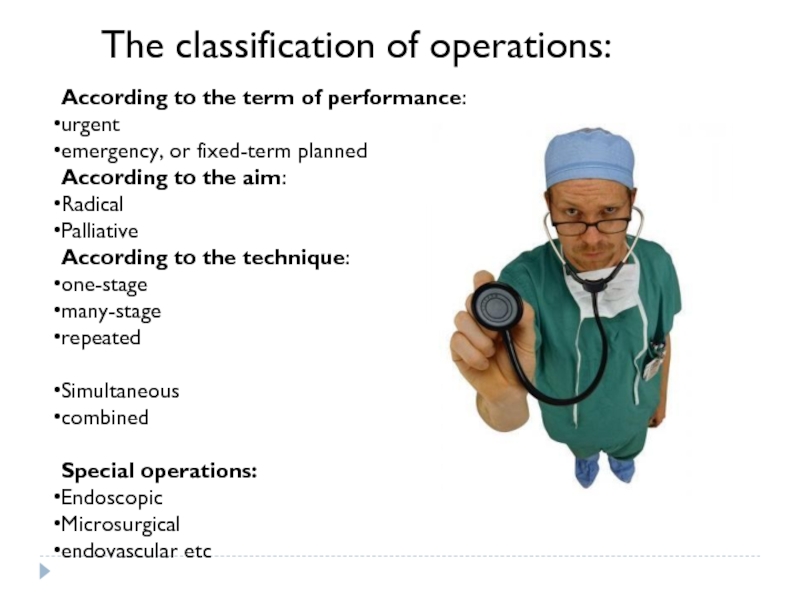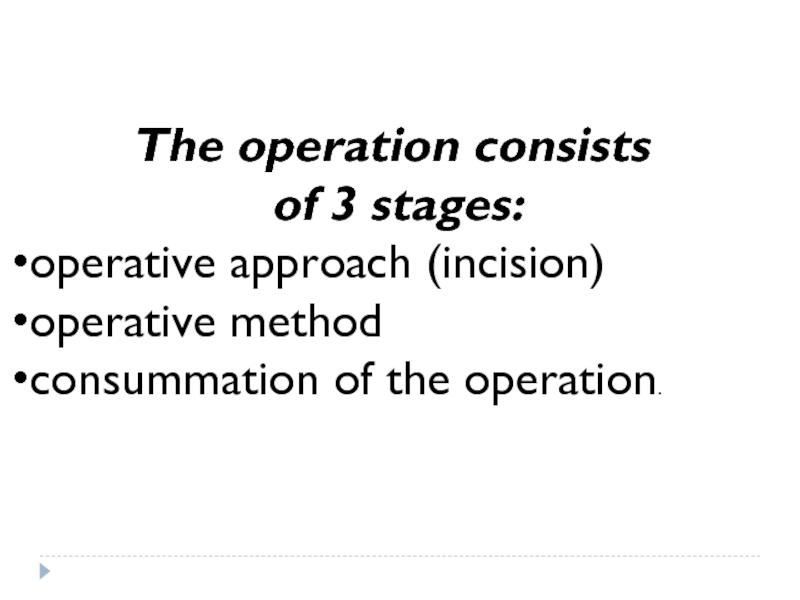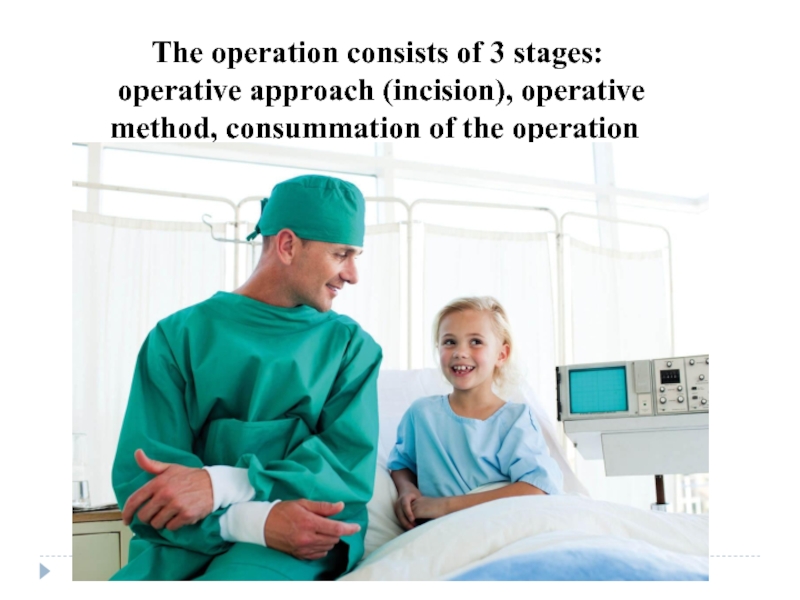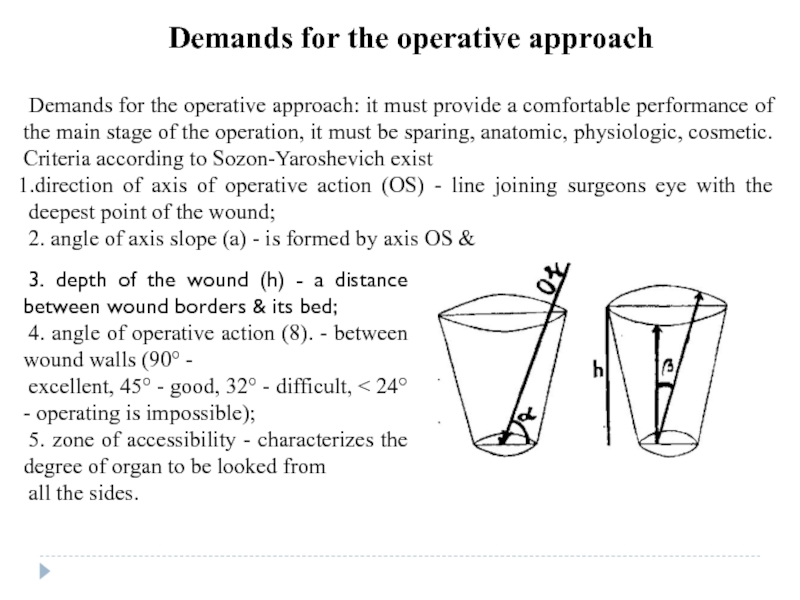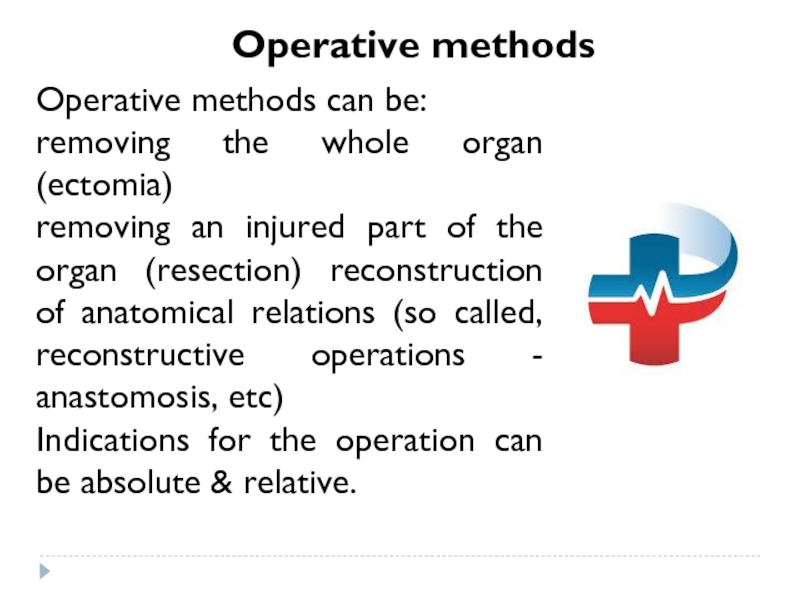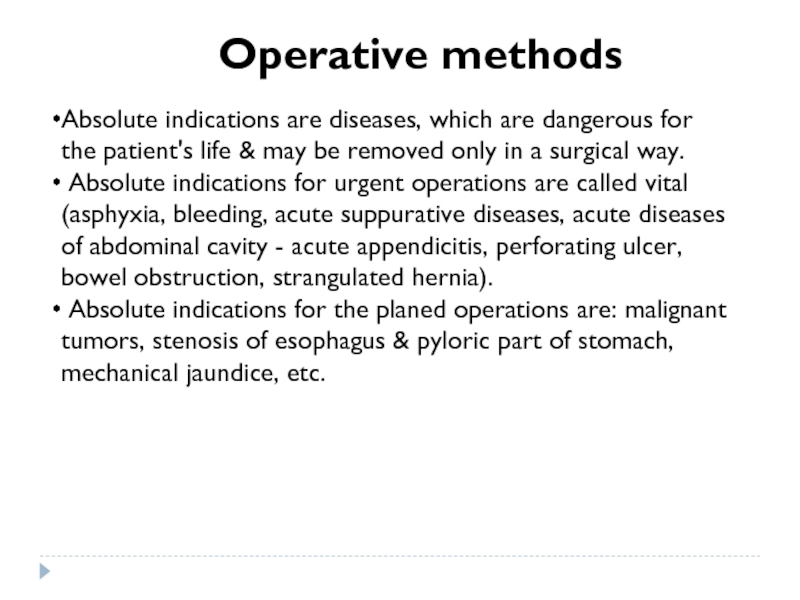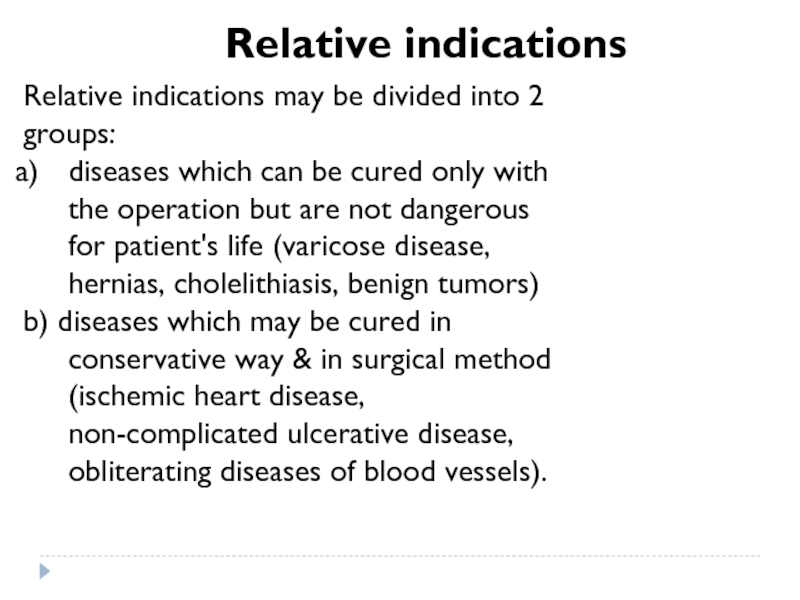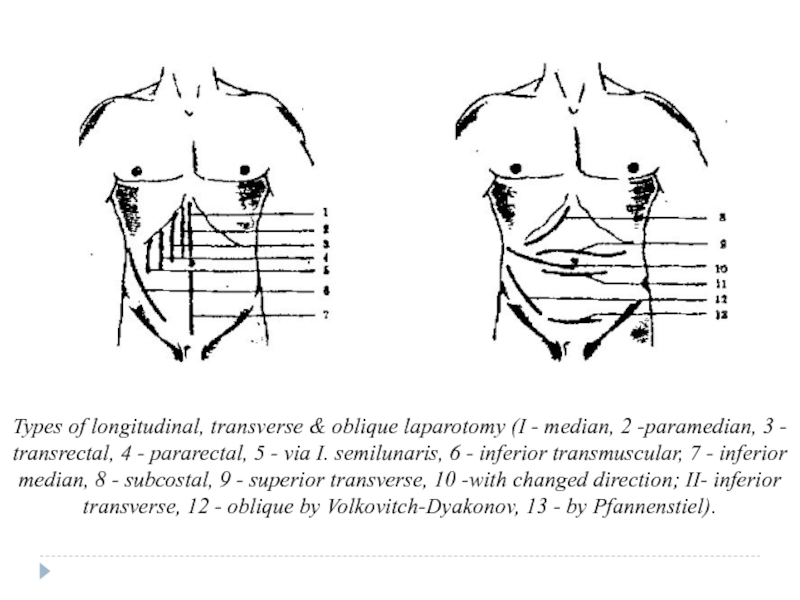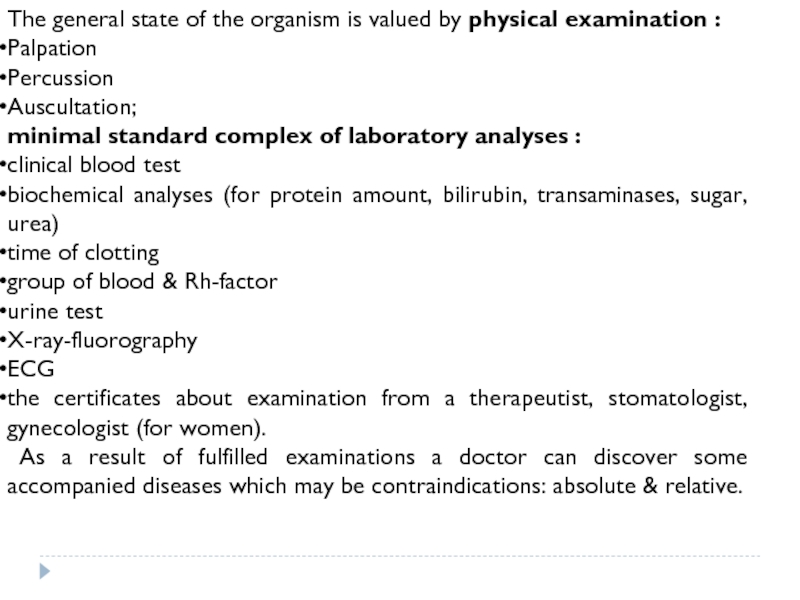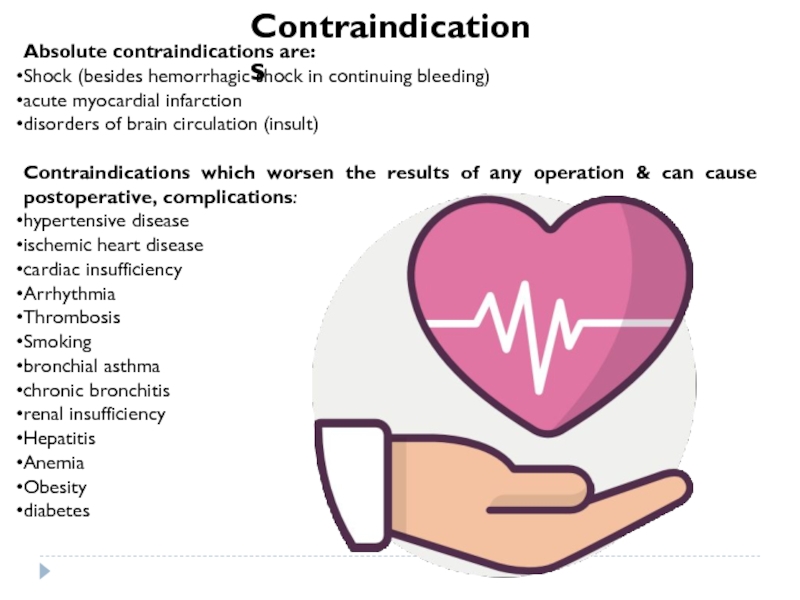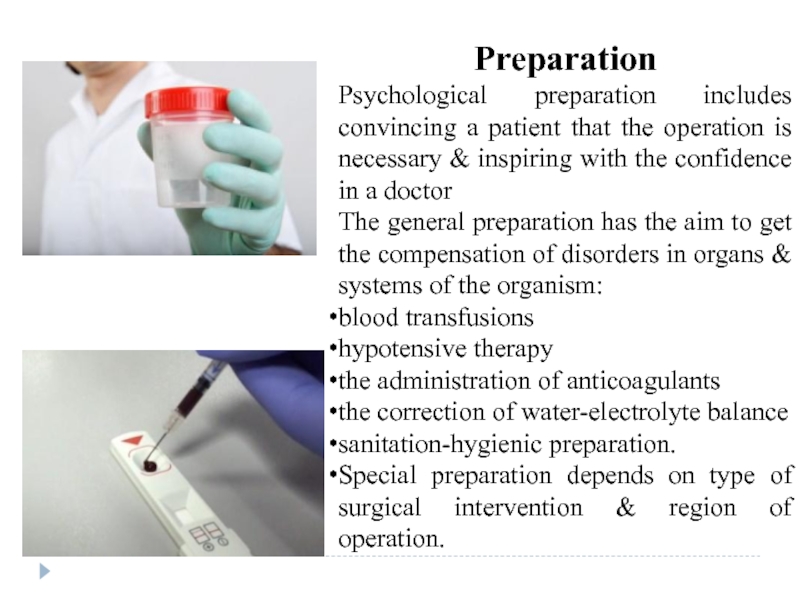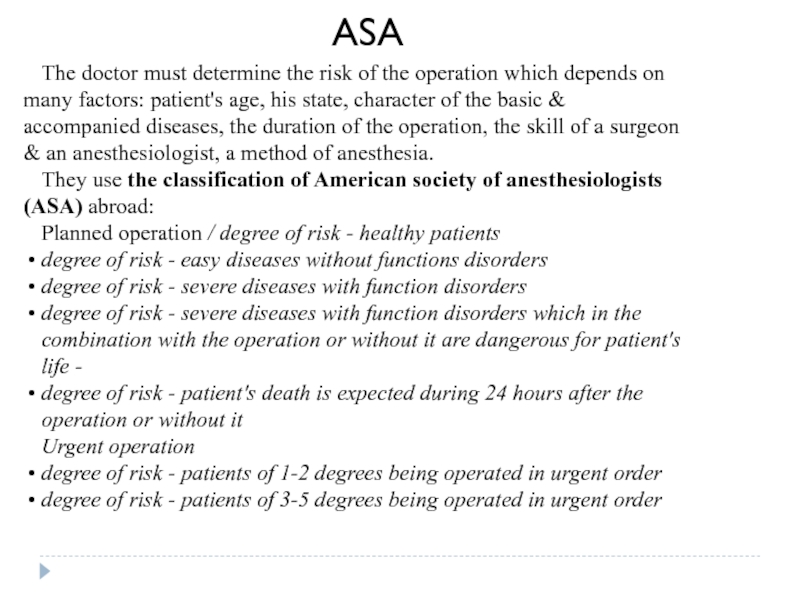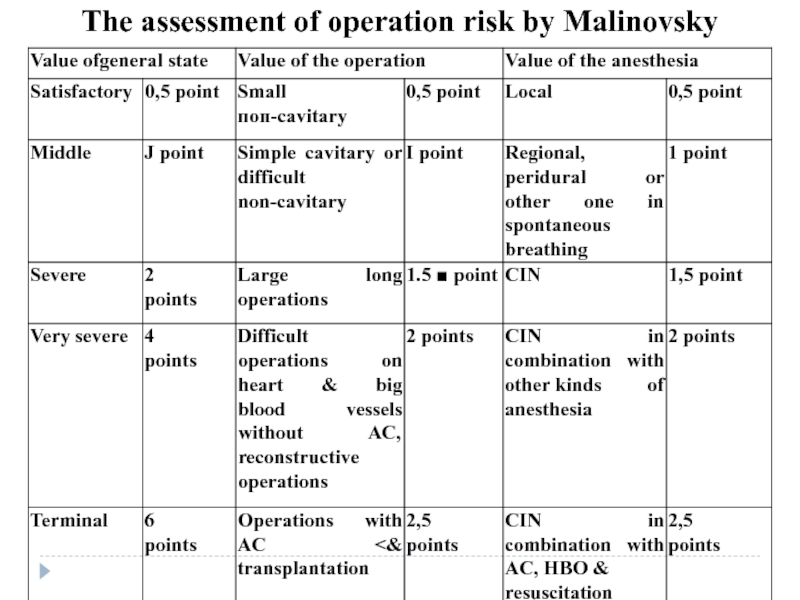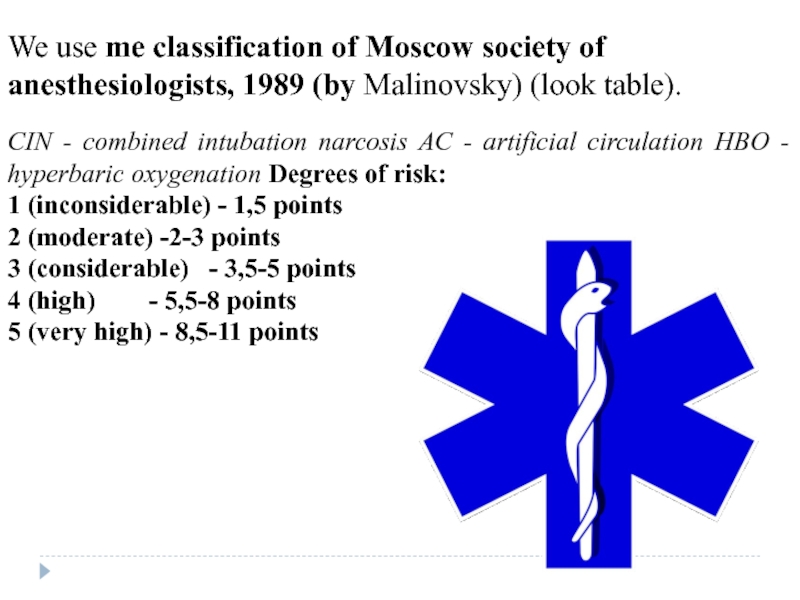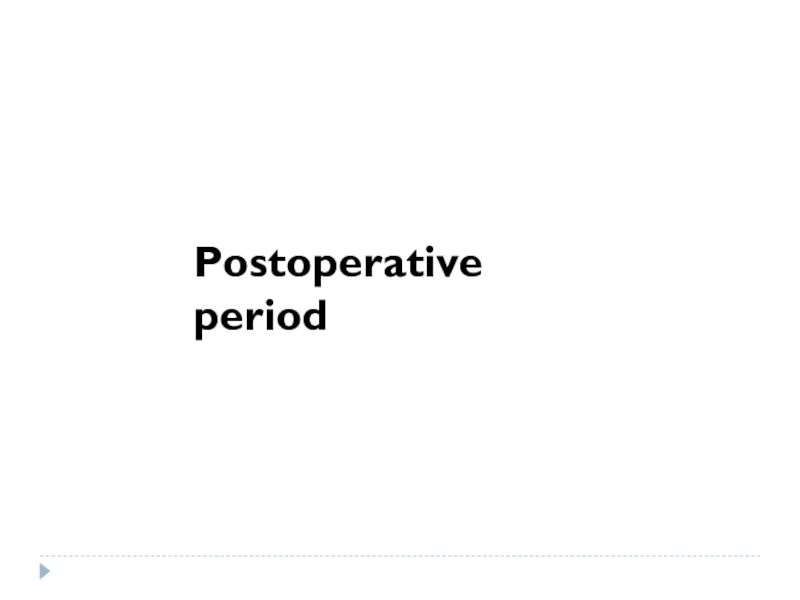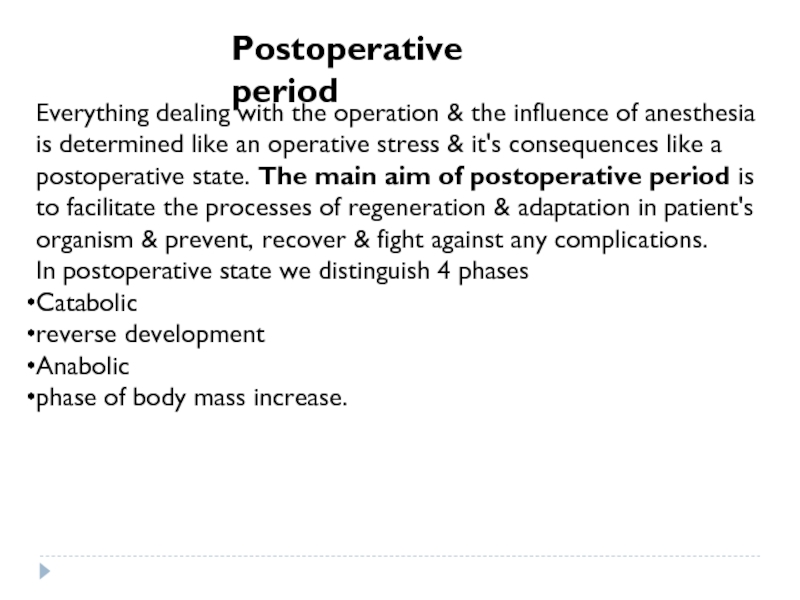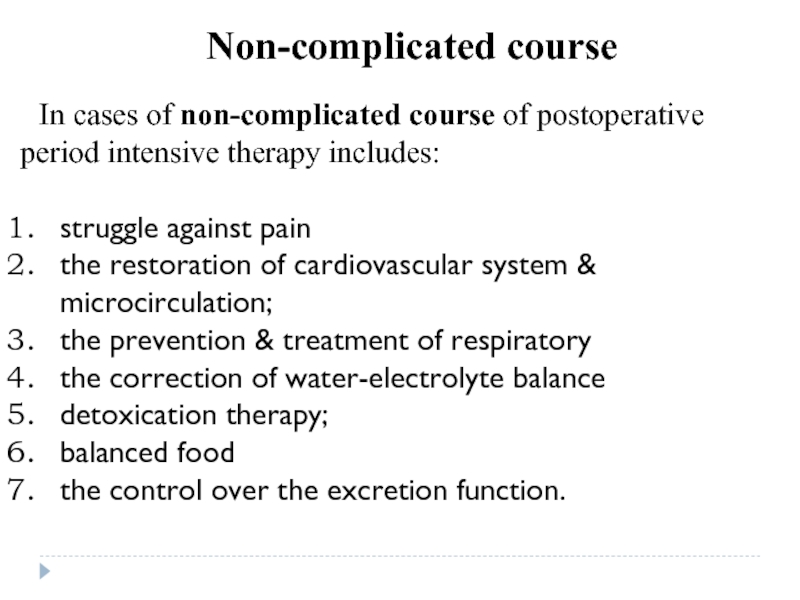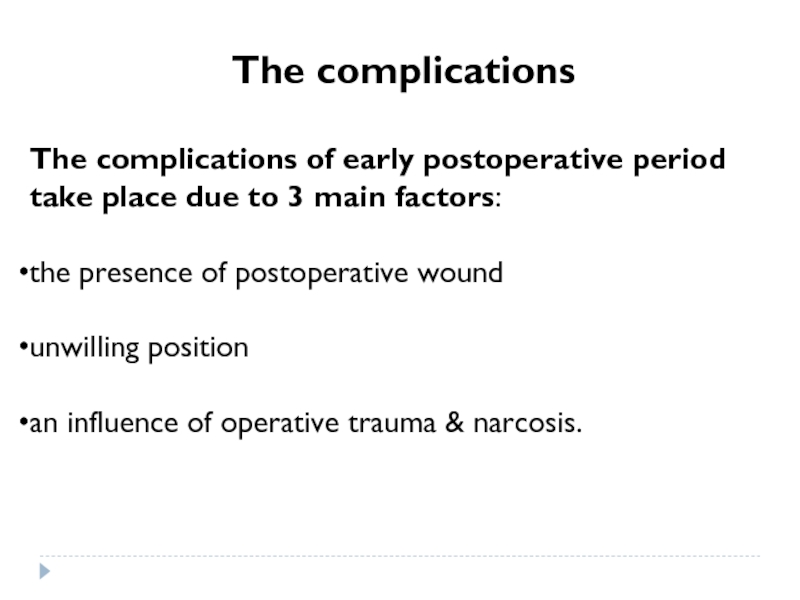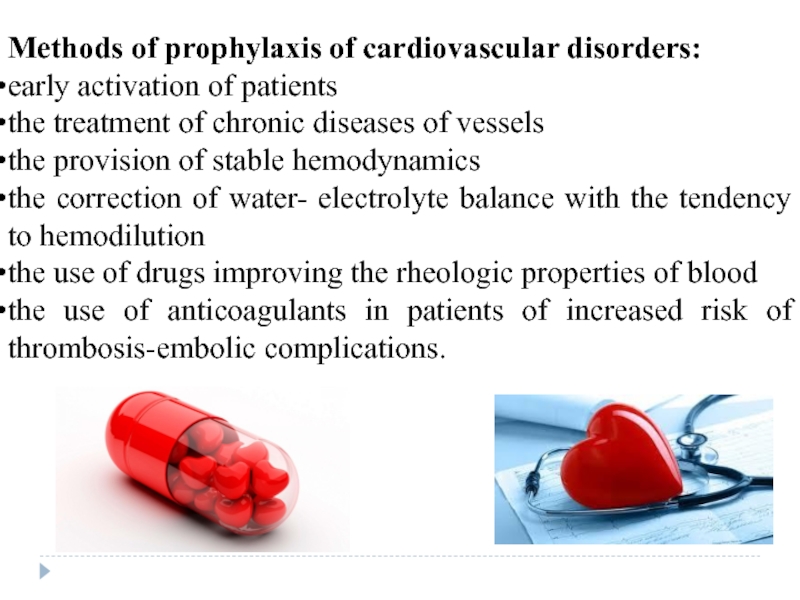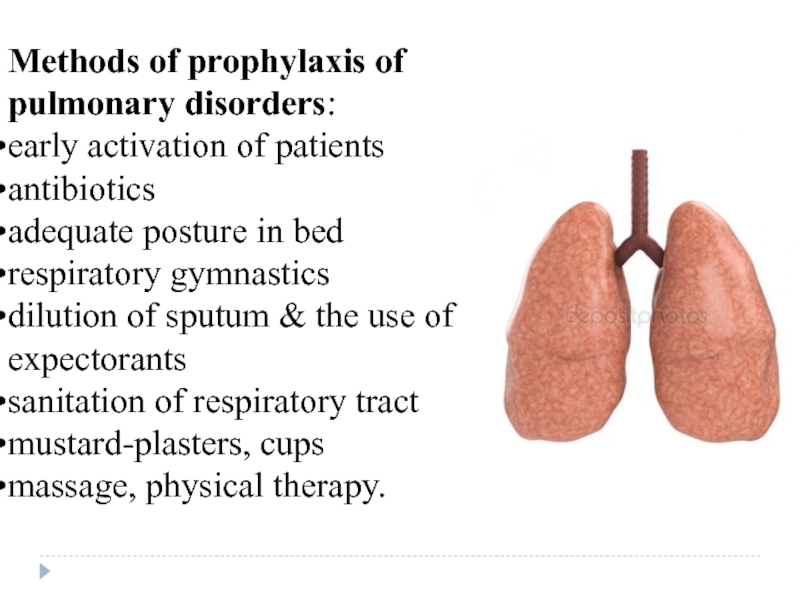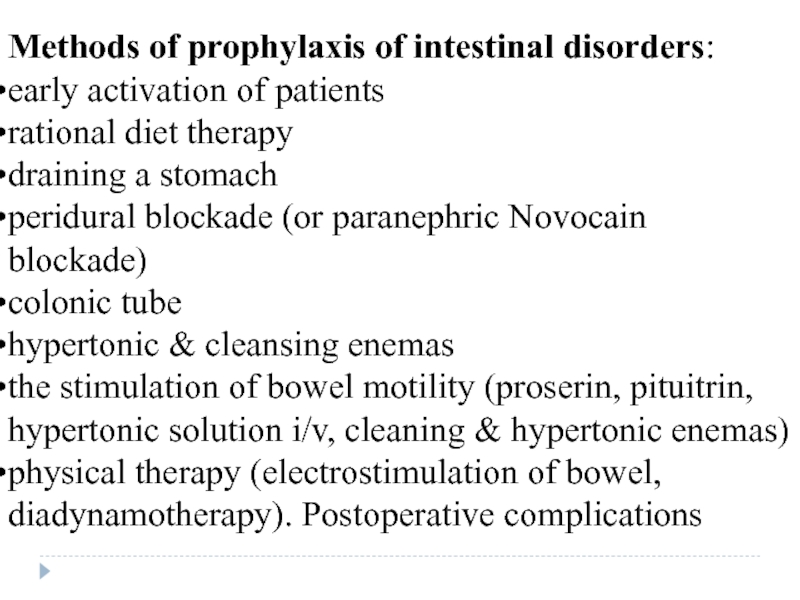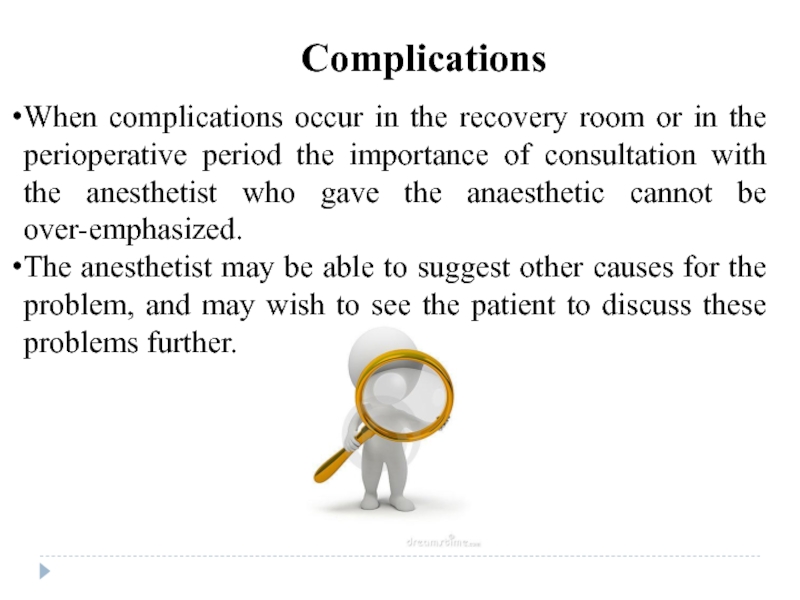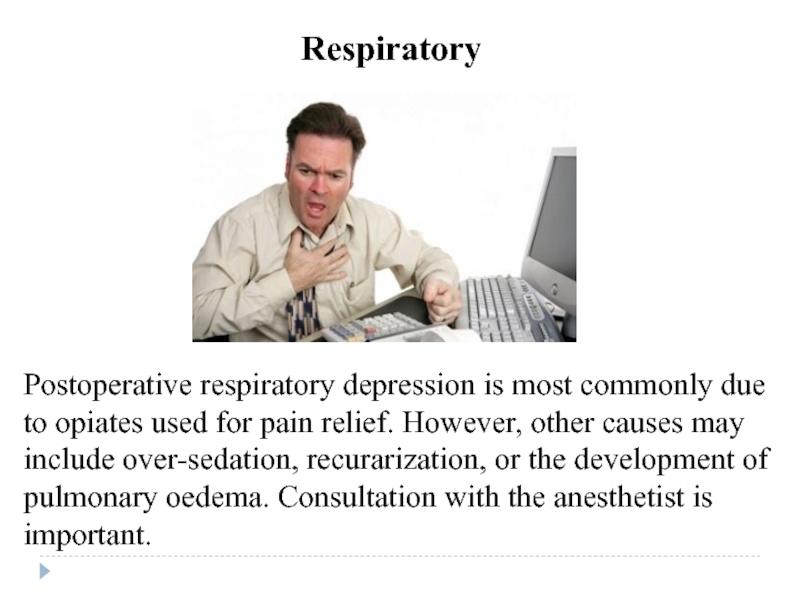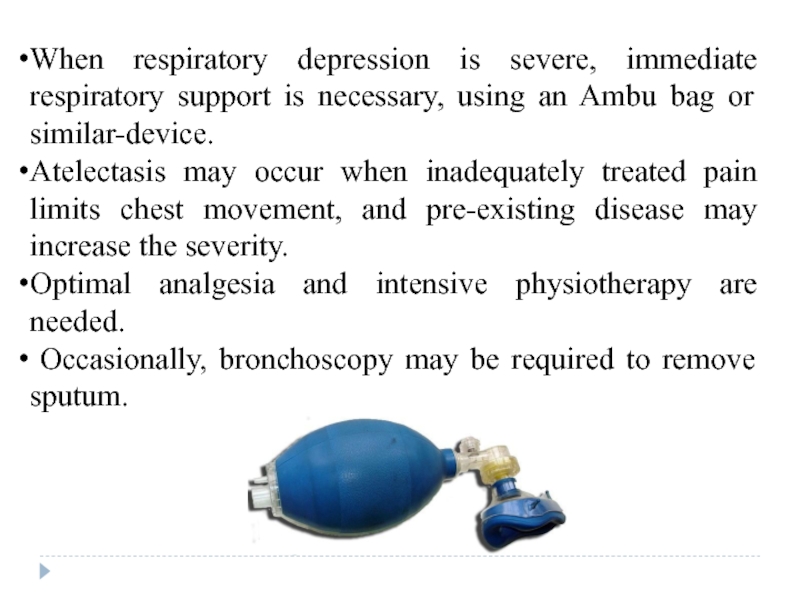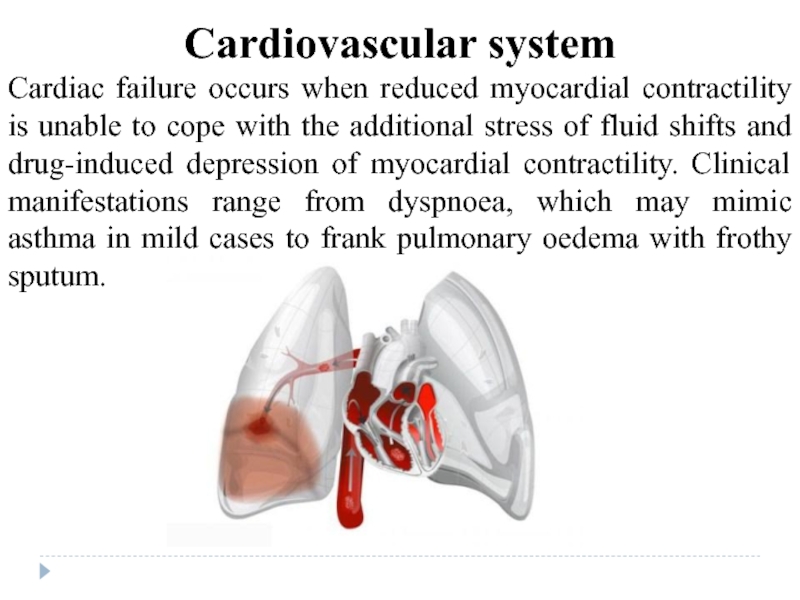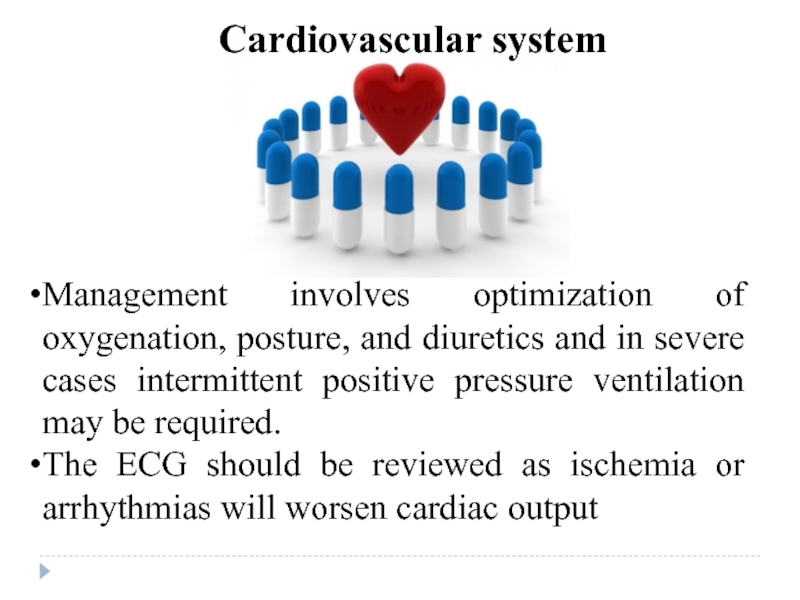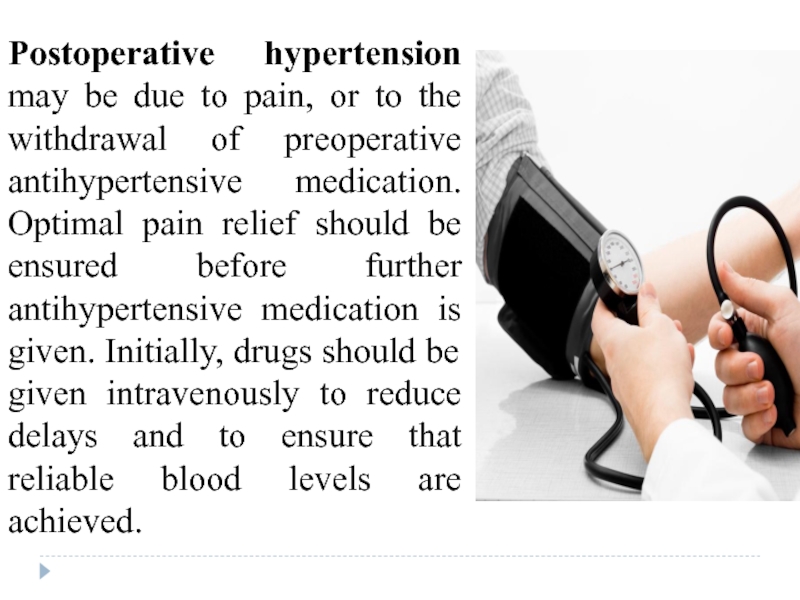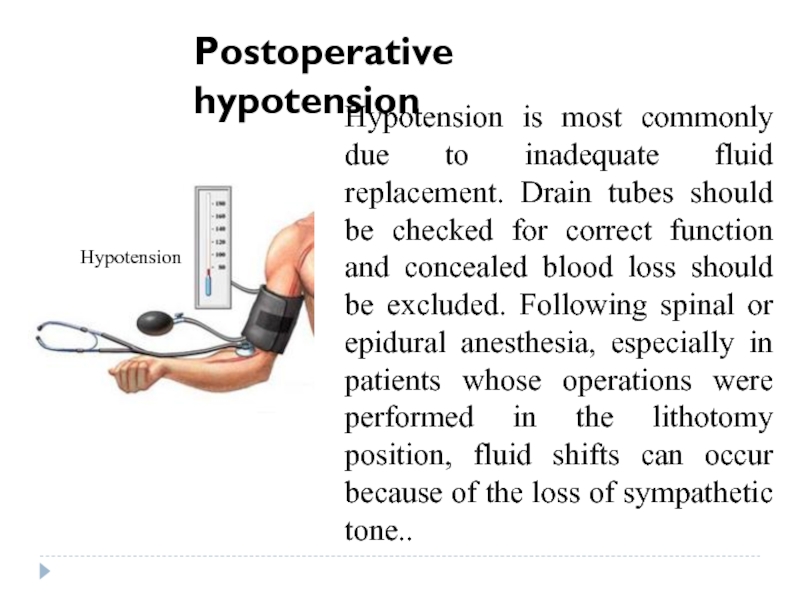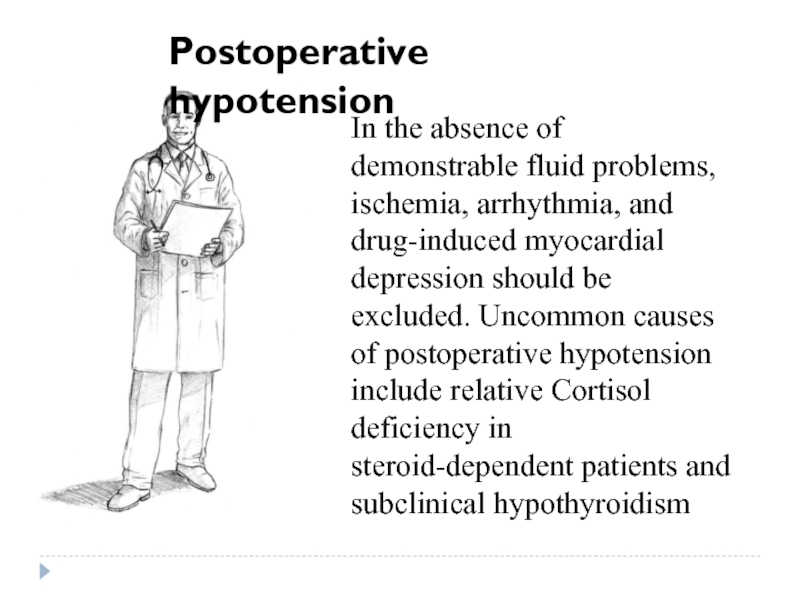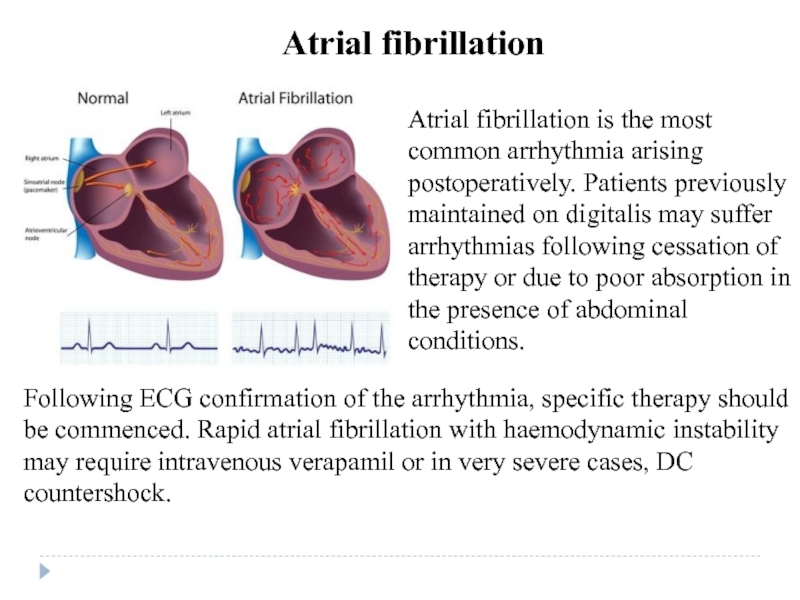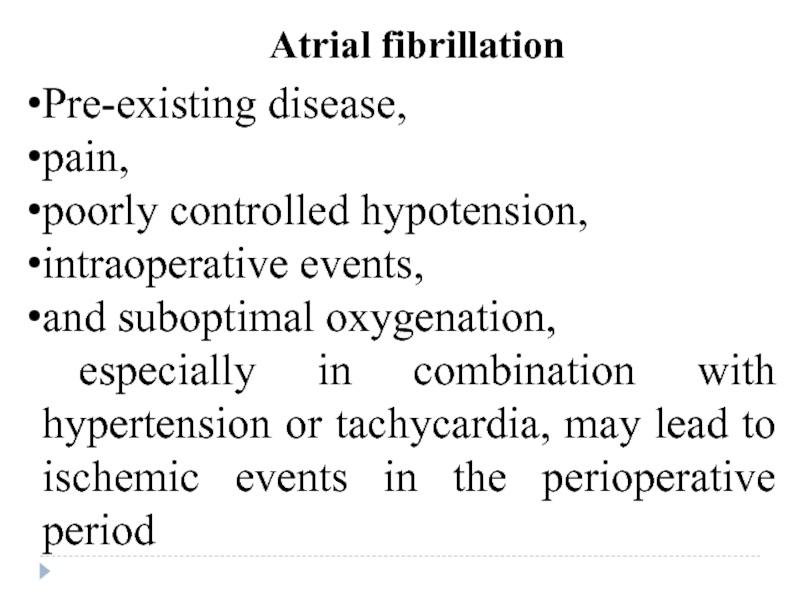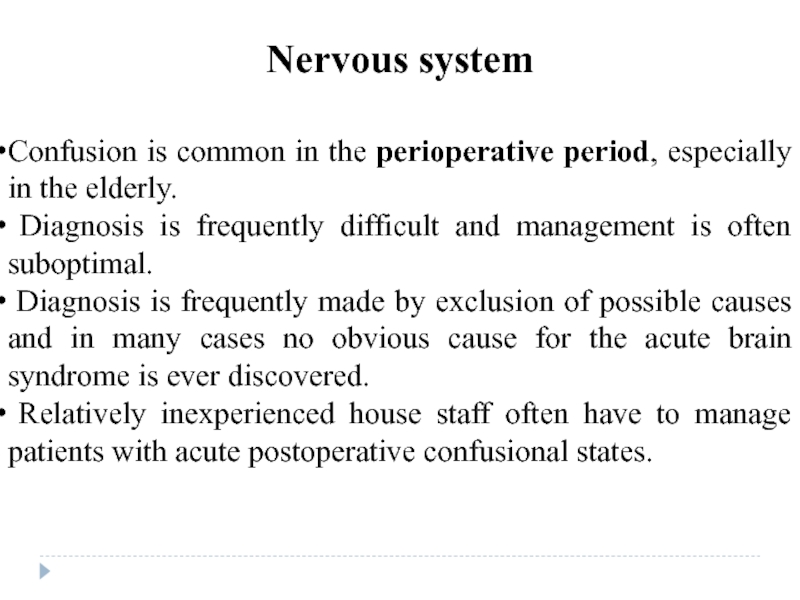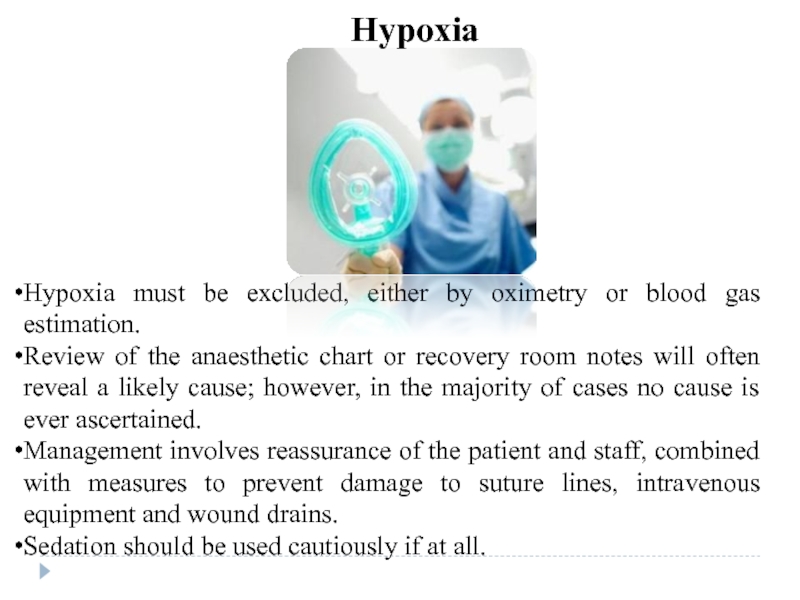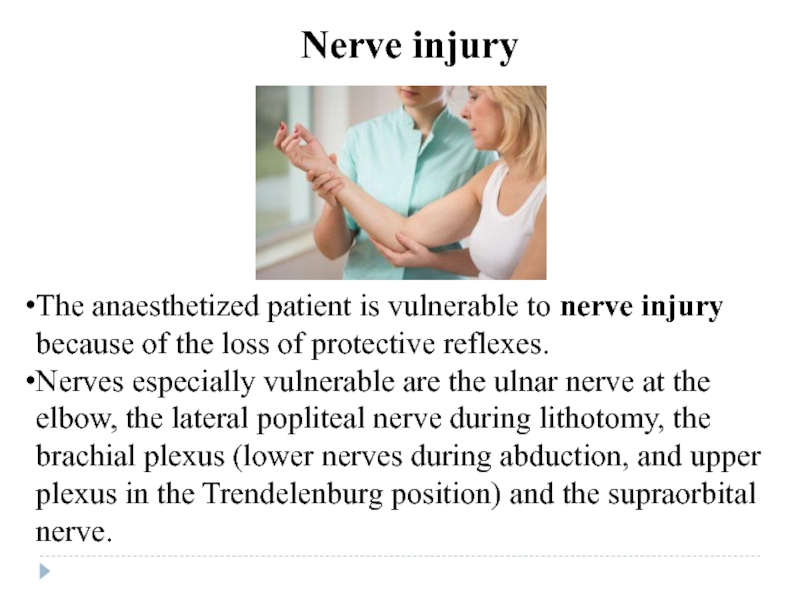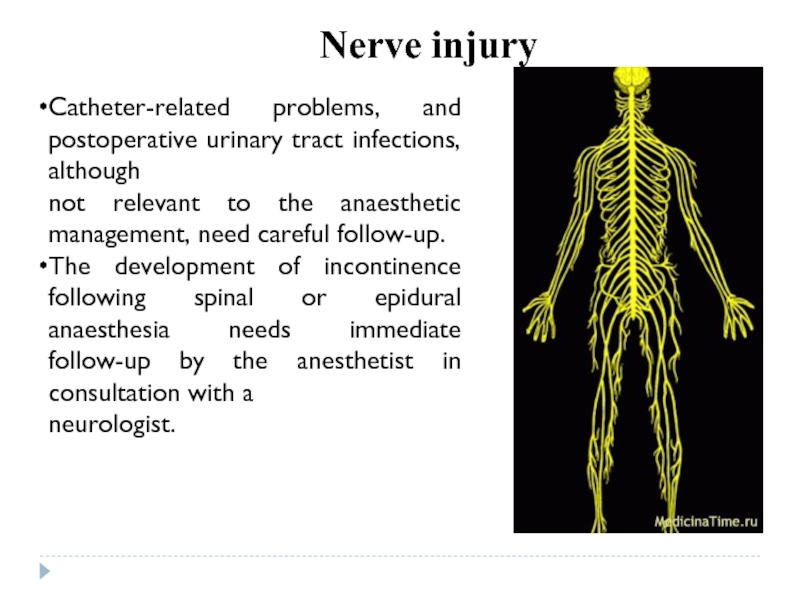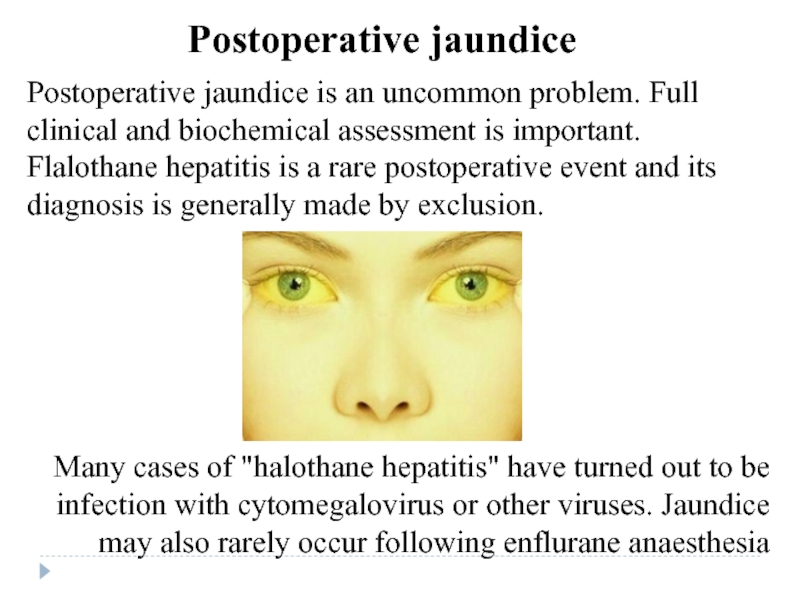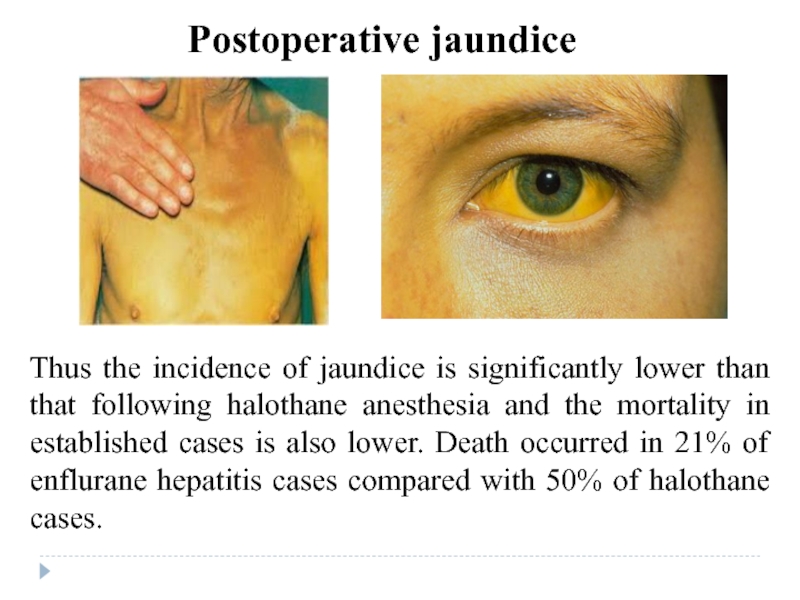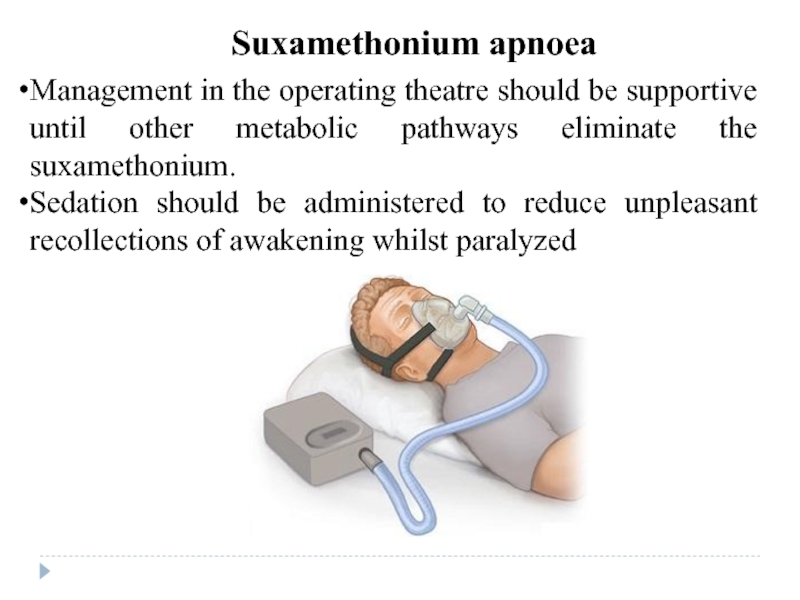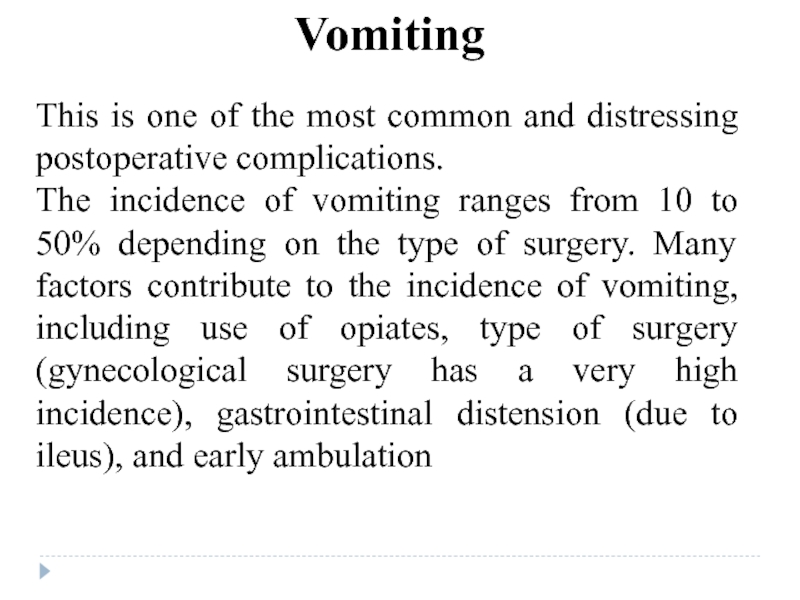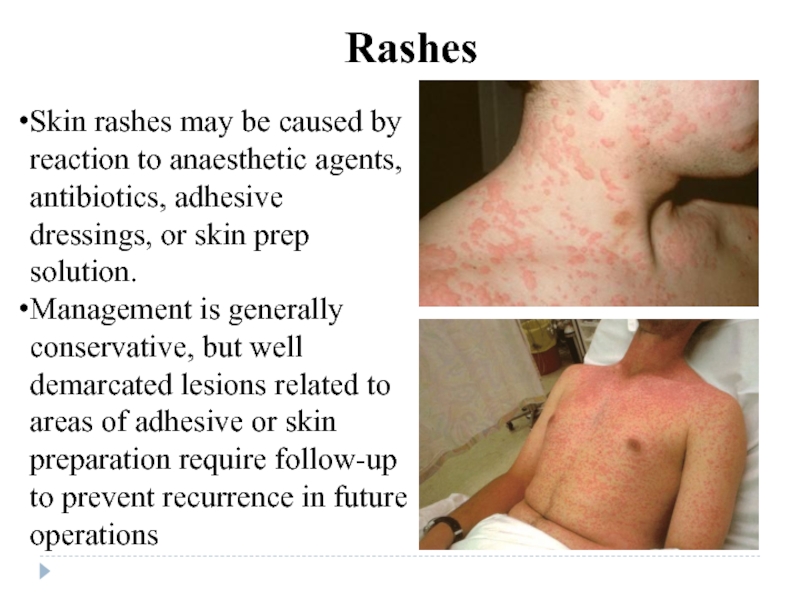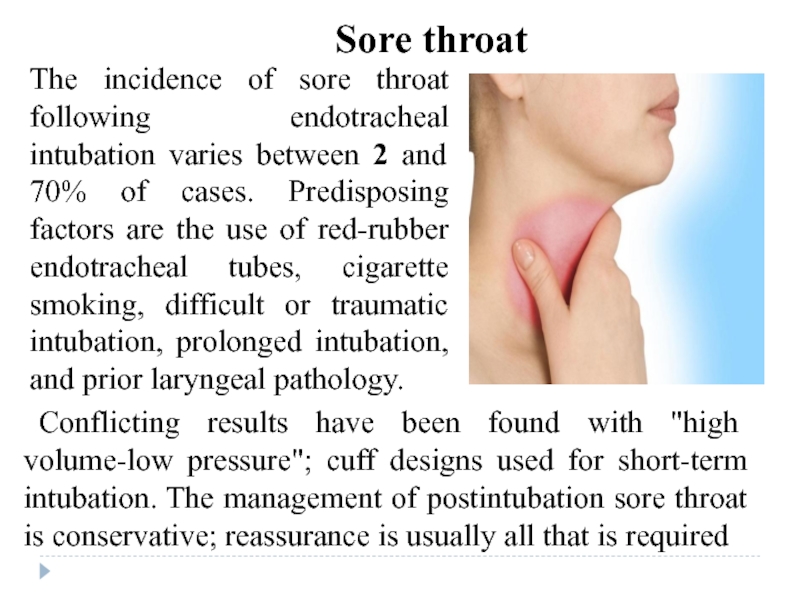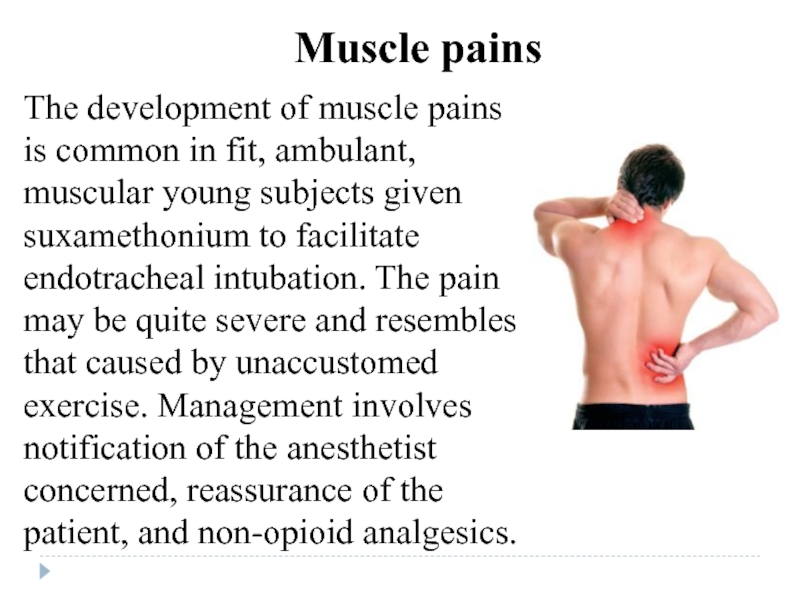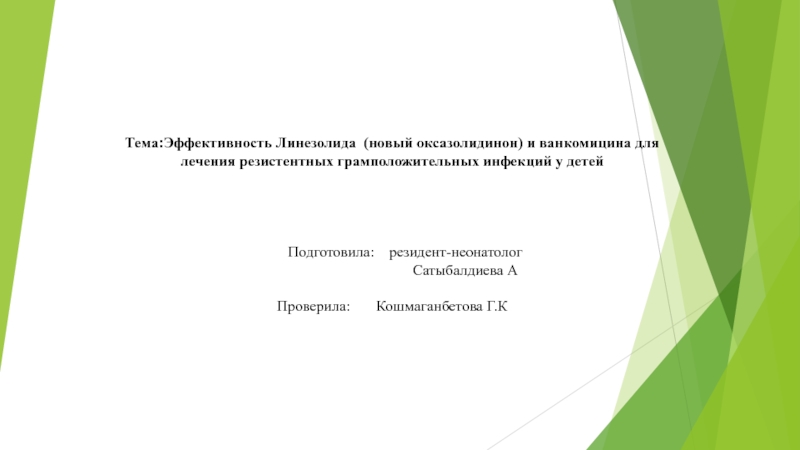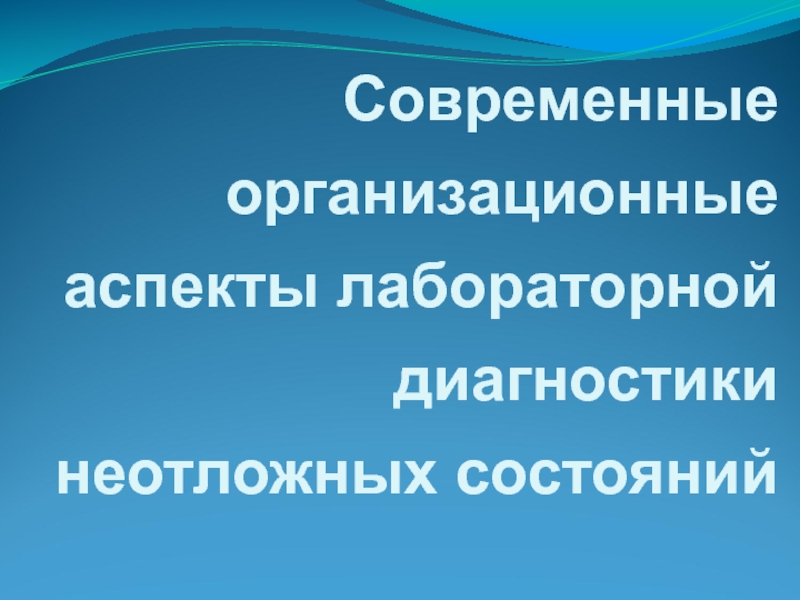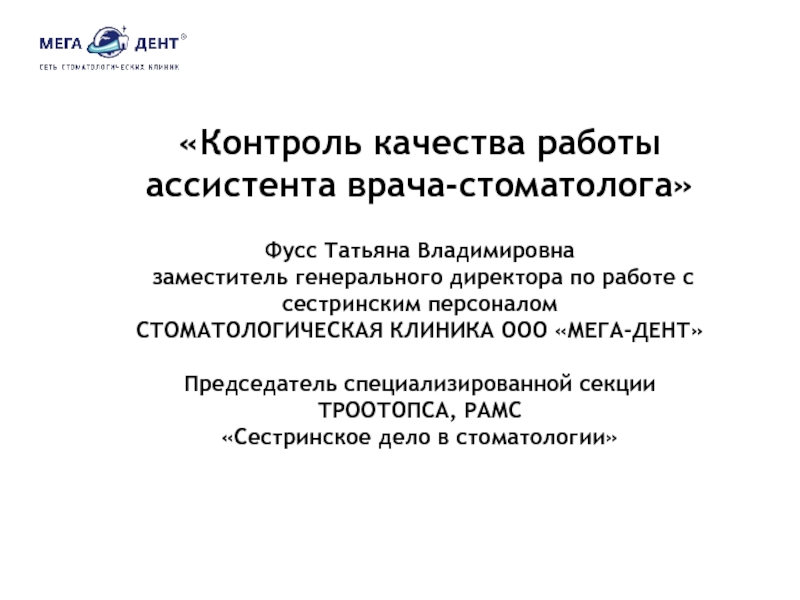- Главная
- Разное
- Дизайн
- Бизнес и предпринимательство
- Аналитика
- Образование
- Развлечения
- Красота и здоровье
- Финансы
- Государство
- Путешествия
- Спорт
- Недвижимость
- Армия
- Графика
- Культурология
- Еда и кулинария
- Лингвистика
- Английский язык
- Астрономия
- Алгебра
- Биология
- География
- Детские презентации
- Информатика
- История
- Литература
- Маркетинг
- Математика
- Медицина
- Менеджмент
- Музыка
- МХК
- Немецкий язык
- ОБЖ
- Обществознание
- Окружающий мир
- Педагогика
- Русский язык
- Технология
- Физика
- Философия
- Химия
- Шаблоны, картинки для презентаций
- Экология
- Экономика
- Юриспруденция
Surgical operation and post-operation period презентация
Содержание
- 1. Surgical operation and post-operation period
- 2. Surgical operation is a traumatic intervention on
- 3. According to the term of performance:
- 4. The operation consists of 3 stages:
- 5. The operation consists of 3 stages:
- 6. Demands for the operative approach: it must
- 7. Operative methods can be: removing the
- 8. Absolute indications are diseases, which are dangerous
- 9. Relative indications may be divided into 2
- 10. Types of longitudinal, transverse & oblique laparotomy
- 11. The general state of the organism is
- 12. Absolute contraindications are: Shock (besides hemorrhagic shock
- 13. Preparation Psychological preparation includes convincing a patient
- 14. The doctor must determine the risk of
- 15. The assessment of operation risk by Malinovsky
- 16. We use me classification of Moscow society
- 17. Postoperative period
- 18. Everything dealing with the operation & the
- 19. In cases of non-complicated course of postoperative
- 20. The complications of early postoperative period take
- 21. Methods of prophylaxis of cardiovascular disorders: early
- 22. Methods of prophylaxis of pulmonary disorders: early
- 23. Methods of prophylaxis of intestinal disorders: early
- 24. When complications occur in the recovery room
- 25. Postoperative respiratory depression is most commonly due
- 26. When respiratory depression is severe, immediate respiratory
- 27. Cardiovascular system Cardiac failure occurs when reduced
- 28. Management involves optimization of oxygenation, posture, and
- 29. Postoperative hypertension may be due to pain,
- 30. Hypotension is most commonly due to inadequate
- 31. In the absence of demonstrable fluid problems,
- 32. Following ECG confirmation of the arrhythmia, specific
- 33. Pre-existing disease, pain, poorly controlled hypotension, intraoperative
- 34. Nervous system Confusion is common in
- 35. Hypoxia must be excluded, either by oximetry
- 36. The anaesthetized patient is vulnerable to nerve
- 37. Catheter-related problems, and postoperative urinary tract infections,
- 38. Postoperative jaundice is an uncommon problem. Full
- 39. Thus the incidence of jaundice is significantly
- 40. Management in the operating theatre should be
- 41. This is one of the most common
- 42. Skin rashes may be caused by reaction
- 43. The incidence of sore throat following endotracheal
- 44. The development of muscle pains is common
- 45. Thanks for your attention!
Слайд 2Surgical operation is a traumatic intervention on organs or tissues with
Слайд 3According to the term of performance:
urgent
emergency, or fixed-term planned
According to
Radical
Palliative
According to the technique:
one-stage
many-stage
repeated
Simultaneous
combined
Special operations:
Endoscopic
Microsurgical
endovascular etc
The classification of operations:
Слайд 4The operation consists
of 3 stages:
operative approach (incision)
operative method
consummation of the
Слайд 5The operation consists of 3 stages:
operative approach (incision), operative method,
Слайд 6Demands for the operative approach: it must provide a comfortable performance
direction of axis of operative action (OS) - line joining surgeons eye with the deepest point of the wound;
2. angle of axis slope (a) - is formed by axis OS &
Demands for the operative approach
3. depth of the wound (h) - a distance between wound borders & its bed;
4. angle of operative action (8). - between wound walls (90° -
excellent, 45° - good, 32° - difficult, < 24° - operating is impossible);
5. zone of accessibility - characterizes the degree of organ to be looked from
all the sides.
Слайд 7Operative methods can be:
removing the whole organ (ectomia)
removing an injured
Indications for the operation can be absolute & relative.
Operative methods
Слайд 8Absolute indications are diseases, which are dangerous for the patient's life
Absolute indications for urgent operations are called vital (asphyxia, bleeding, acute suppurative diseases, acute diseases of abdominal cavity - acute appendicitis, perforating ulcer, bowel obstruction, strangulated hernia).
Absolute indications for the planed operations are: malignant tumors, stenosis of esophagus & pyloric part of stomach, mechanical jaundice, etc.
Operative methods
Слайд 9Relative indications may be divided into 2 groups:
diseases which can
b) diseases which may be cured in conservative way & in surgical method (ischemic heart disease, non-complicated ulcerative disease, obliterating diseases of blood vessels).
Relative indications
Слайд 10Types of longitudinal, transverse & oblique laparotomy (I - median, 2
Слайд 11The general state of the organism is valued by physical examination
Palpation
Percussion
Auscultation;
minimal standard complex of laboratory analyses :
clinical blood test
biochemical analyses (for protein amount, bilirubin, transaminases, sugar, urea)
time of clotting
group of blood & Rh-factor
urine test
X-ray-fluorography
ECG
the certificates about examination from a therapeutist, stomatologist, gynecologist (for women).
As a result of fulfilled examinations a doctor can discover some accompanied diseases which may be contraindications: absolute & relative.
Слайд 12Absolute contraindications are:
Shock (besides hemorrhagic shock in continuing bleeding)
acute myocardial infarction
disorders
Contraindications which worsen the results of any operation & can cause postoperative, complications:
hypertensive disease
ischemic heart disease
cardiac insufficiency
Arrhythmia
Thrombosis
Smoking
bronchial asthma
chronic bronchitis
renal insufficiency
Hepatitis
Anemia
Obesity
diabetes
Contraindications
Слайд 13Preparation
Psychological preparation includes convincing a patient that the operation is necessary
The general preparation has the aim to get the compensation of disorders in organs & systems of the organism:
blood transfusions
hypotensive therapy
the administration of anticoagulants
the correction of water-electrolyte balance
sanitation-hygienic preparation.
Special preparation depends on type of surgical intervention & region of operation.
Слайд 14The doctor must determine the risk of the operation which depends
They use the classification of American society of anesthesiologists (ASA) abroad:
Planned operation / degree of risk - healthy patients
degree of risk - easy diseases without functions disorders
degree of risk - severe diseases with function disorders
degree of risk - severe diseases with function disorders which in the combination with the operation or without it are dangerous for patient's life -
degree of risk - patient's death is expected during 24 hours after the operation or without it
Urgent operation
degree of risk - patients of 1-2 degrees being operated in urgent order
degree of risk - patients of 3-5 degrees being operated in urgent order
ASA
Слайд 16We use me classification of Moscow society of anesthesiologists, 1989 (by
CIN - combined intubation narcosis AC - artificial circulation HBO - hyperbaric oxygenation Degrees of risk:
1 (inconsiderable) - 1,5 points
2 (moderate) -2-3 points
3 (considerable) - 3,5-5 points
4 (high) - 5,5-8 points
5 (very high) - 8,5-11 points
Слайд 18Everything dealing with the operation & the influence of anesthesia is
In postoperative state we distinguish 4 phases
Catabolic
reverse development
Anabolic
phase of body mass increase.
Postoperative period
Слайд 19In cases of non-complicated course of postoperative period intensive therapy includes:
struggle
the restoration of cardiovascular system & microcirculation;
the prevention & treatment of respiratory
the correction of water-electrolyte balance
detoxication therapy;
balanced food
the control over the excretion function.
Non-complicated course
Слайд 20The complications of early postoperative period take place due to 3
the presence of postoperative wound
unwilling position
an influence of operative trauma & narcosis.
The complications
Слайд 21Methods of prophylaxis of cardiovascular disorders:
early activation of patients
the treatment of
the provision of stable hemodynamics
the correction of water- electrolyte balance with the tendency to hemodilution
the use of drugs improving the rheologic properties of blood
the use of anticoagulants in patients of increased risk of thrombosis-embolic complications.
Слайд 22Methods of prophylaxis of pulmonary disorders:
early activation of patients
antibiotics
adequate posture in
respiratory gymnastics
dilution of sputum & the use of expectorants
sanitation of respiratory tract
mustard-plasters, cups
massage, physical therapy.
Слайд 23Methods of prophylaxis of intestinal disorders:
early activation of patients
rational diet therapy
draining
peridural blockade (or paranephric Novocain blockade)
colonic tube
hypertonic & cleansing enemas
the stimulation of bowel motility (proserin, pituitrin, hypertonic solution i/v, cleaning & hypertonic enemas)
physical therapy (electrostimulation of bowel, diadynamotherapy). Postoperative complications
Слайд 24When complications occur in the recovery room or in the perioperative
The anesthetist may be able to suggest other causes for the problem, and may wish to see the patient to discuss these problems further.
Complications
Слайд 25Postoperative respiratory depression is most commonly due to opiates used for
Respiratory
Слайд 26When respiratory depression is severe, immediate respiratory support is necessary, using
Atelectasis may occur when inadequately treated pain limits chest movement, and pre-existing disease may increase the severity.
Optimal analgesia and intensive physiotherapy are needed.
Occasionally, bronchoscopy may be required to remove sputum.
Слайд 27Cardiovascular system
Cardiac failure occurs when reduced myocardial contractility is unable to
Слайд 28Management involves optimization of oxygenation, posture, and diuretics and in severe
The ECG should be reviewed as ischemia or arrhythmias will worsen cardiac output
Cardiovascular system
Слайд 29Postoperative hypertension may be due to pain, or to the withdrawal
Слайд 30Hypotension is most commonly due to inadequate fluid replacement. Drain tubes
Postoperative hypotension
Слайд 31In the absence of demonstrable fluid problems, ischemia, arrhythmia, and drug-induced
Postoperative hypotension
Слайд 32Following ECG confirmation of the arrhythmia, specific therapy should be commenced.
Atrial fibrillation
Atrial fibrillation is the most common arrhythmia arising postoperatively. Patients previously maintained on digitalis may suffer arrhythmias following cessation of therapy or due to poor absorption in the presence of abdominal conditions.
Слайд 33Pre-existing disease,
pain,
poorly controlled hypotension,
intraoperative events,
and suboptimal oxygenation,
especially in combination
Atrial fibrillation
Слайд 34Nervous system
Confusion is common in the perioperative period, especially in the
Diagnosis is frequently difficult and management is often suboptimal.
Diagnosis is frequently made by exclusion of possible causes and in many cases no obvious cause for the acute brain syndrome is ever discovered.
Relatively inexperienced house staff often have to manage patients with acute postoperative confusional states.
Слайд 35Hypoxia must be excluded, either by oximetry or blood gas estimation.
Review of the anaesthetic chart or recovery room notes will often reveal a likely cause; however, in the majority of cases no cause is ever ascertained.
Management involves reassurance of the patient and staff, combined with measures to prevent damage to suture lines, intravenous equipment and wound drains.
Sedation should be used cautiously if at all.
Hypoxia
Слайд 36The anaesthetized patient is vulnerable to nerve injury because of the
Nerves especially vulnerable are the ulnar nerve at the elbow, the lateral popliteal nerve during lithotomy, the brachial plexus (lower nerves during abduction, and upper plexus in the Trendelenburg position) and the supraorbital nerve.
Nerve injury
Слайд 37Catheter-related problems, and postoperative urinary tract infections, although
not relevant to the
The development of incontinence following spinal or epidural anaesthesia needs immediate follow-up by the anesthetist in consultation with a
neurologist.
Nerve injury
Слайд 38Postoperative jaundice is an uncommon problem. Full clinical and biochemical assessment
Many cases of "halothane hepatitis" have turned out to be infection with cytomegalovirus or other viruses. Jaundice may also rarely occur following enflurane anaesthesia
Postoperative jaundice
Слайд 39Thus the incidence of jaundice is significantly lower than that following
Postoperative jaundice
Слайд 40Management in the operating theatre should be supportive until other metabolic
Sedation should be administered to reduce unpleasant recollections of awakening whilst paralyzed
Suxamethonium apnoea
Слайд 41This is one of the most common and distressing postoperative complications.
The incidence of vomiting ranges from 10 to 50% depending on the type of surgery. Many factors contribute to the incidence of vomiting, including use of opiates, type of surgery (gynecological surgery has a very high incidence), gastrointestinal distension (due to ileus), and early ambulation
Vomiting
Слайд 42Skin rashes may be caused by reaction to anaesthetic agents, antibiotics,
Management is generally conservative, but well demarcated lesions related to areas of adhesive or skin preparation require follow-up to prevent recurrence in future operations
Rashes
Слайд 43The incidence of sore throat following endotracheal intubation varies between 2
Conflicting results have been found with "high volume-low pressure"; cuff designs used for short-term intubation. The management of postintubation sore throat is conservative; reassurance is usually all that is required
Sore throat
Слайд 44The development of muscle pains is common in fit, ambulant, muscular
Muscle pains
